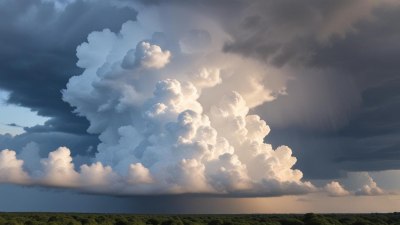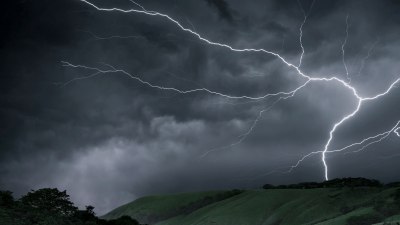How to Decode the Weather Like a Cloud Whisperer
Master the art of weather interpretation inspired by nature's nuances and expert insights.

This image was created with the assistance of Freepik
Understanding the weather can feel like an intricate dance, where clouds, winds, and atmospheric pressure play leading roles. To decode weather patterns like a cloud whisperer, one must tap into the subtleties of nature’s messages, allowing us to anticipate changes in our environment. In this article, we will explore various techniques and insights that will enable you to become adept at interpreting the signs the weather presents.
Recognizing Cloud Types
The first step in mastering weather interpretation is learning to identify different cloud types. Each cloud type carries with it unique characteristics associated with specific weather patterns. For instance, cumulus clouds are often associated with fair weather. They appear fluffy and white, resembling cotton balls floating in the sky. In contrast, stratus clouds are gray and can cover the sky uniformly, suggesting overcast conditions that may lead to drizzle or steady rain.
Nimbostratus clouds indicate thick, overcast skies that are often linked with prolonged precipitation. An understanding of these cloud types gives you foundational knowledge that supports further weather predictions. Additionally, cirrus clouds—thin, wispy clouds often seen high in the atmosphere—can indicate an approaching warm front, making them valuable indicators of future conditions.
Deciphering Cloud Patterns
Once you've identified cloud types, the next step is to observe their patterns. The arrangement, movement, and evolution of clouds provide vital clues about incoming weather changes. For instance, if you notice cumulus clouds evolving into cumulonimbus clouds—large, towering clouds associated with thunderstorms—it’s wise to prepare for potential storms. Watching how quickly clouds develop can also reveal a lot; rapid development suggests unstable air and potential for severe weather.
Furthermore, understanding how wind patterns influence cloud movement can bolster your interpretations. Wind direction can carry particular cloud types to your area, bringing with them certain weather outcomes. Observing the local geography, such as mountains and bodies of water, can also affect cloud formations and weather systems, making it crucial for a cloud whisperer to hone their observations accordingly.
The Role of Weather Fronts
Weather fronts are boundaries between two air masses with different temperatures and humidity levels; they are key players in weather changes. Cold fronts typically bring a dramatic drop in temperature, alongside potential thunderstorms or heavy showers as warm air is forced to rise. Conversely, warm fronts lead to gradual temperature increases and prolonged rainfall as warm air slides over cooler air. Recognizing the signs of these fronts is essential for accurate weather decoding.
Meteorologists often look for specific markers to identify the approach of a front. For example, a sudden wind shift, changes in temperature, or shifts in cloud types can indicate that a front is nearby. Observing these nuances equips you to better predict weather changes in your area.
The Importance of Pressure Systems
Pressure systems are another critical aspect of understanding weather. High-pressure systems often lead to clear skies and calm weather, while low-pressure systems are typically associated with unsettled conditions, including clouds, rain, and storms. Tracking the movement of these systems using regional reports or weather apps can help you predict local weather with greater accuracy.
To interpret pressure changes effectively, one key technique involves using a barometer. A rising barometer indicates improving weather and stable atmospheric conditions, whereas a falling barometer may signal approaching storms or inclement weather. By monitoring barometric trends alongside cloud observations, you can refine your ability to decode weather patterns accurately.
Utilizing Technology
Although technology can help, it’s essential to combine this information with your observations. Delving into meteorological models and understanding the data presented in them will empower you to interpret forecasts critically and build your weather reading abilities.
Staying Aware of Seasonal Patterns
Each season presents its own unique set of weather patterns. Familiarizing yourself with the typical weather trends in your region throughout the year will significantly aid your decoding efforts. For example, in late spring and summer, patterns of thunderstorms may emerge, while the winter months may present snow and icy conditions.
Understanding how seasonal patterns influence cloud formations, pressure systems, and precipitation types will enhance your ability to decode the weather, allowing you to anticipate seasonal transitions with greater accuracy. Keep a weather journal to record your observations, noting cloud types, temperature changes, and rainfall amounts over time. This practice will help you discern patterns and improve your forecasting skills.
Harnessing Nature’s Signals
Nature can offer excellent cues about incoming weather changes even beyond cloud observations. For instance, various animal behaviors can suggest shifts in weather. Birds often tend to fly low to the ground ahead of storms, while certain species may be more active during warm fronts. Observing how wildlife interacts with their environment can provide valuable insights into impending changes.
Additionally, natural elements such as the smell of rain or the increase of humidity can indicate an approaching storm. Paying attention to these sensory experiences furthers your ability to interpret the weather accurately and communicates a deeper connection with your environment.
Practicing Regularly
To become adept at decoding the weather like a cloud whisperer, regular practice is essential. Spend time each day observing the sky, noting the cloud patterns, the temperature, and any wind changes. Challenge yourself to predict the weather based on your observations. Over time, you will develop a more cultivated eye for detail, allowing you to draw meaningful conclusions about your local weather situation.
As your skills grow, consider sharing your insights with others. Engage in weather discussions with friends or family to foster a deeper understanding of weather phenomena. The more you articulate what you observe, the clearer your comprehension of weather systems will become.
Decoding the weather like a cloud whisperer involves a combination of knowledge, observation, and understanding the interactions between various weather components. By engaging with cloud types, pressure systems, and technology, and by interpreting nature's signals, you will cultivate your forecasting abilities. After reinforcing your skills through observation and practice, you'll no longer simply glance at the sky; instead, you'll interpret the rich story it tells. So go forth, channel your inner cloud whisperer, and embrace the beauty of understanding the whims of nature.











